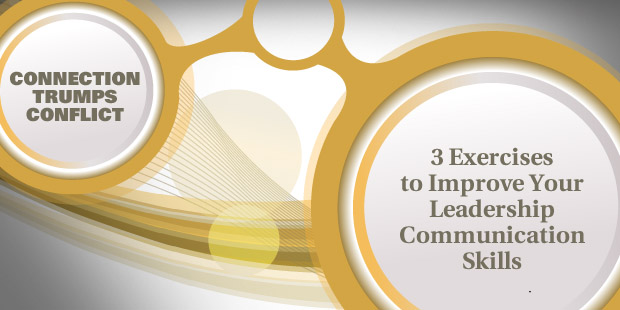By Judith E. Glaser | visionroom.com
Published: May 1, 2013

I’m sure it’s happened to you: You’re in a tense team meeting trying to defend your position on a big project and start to feel yourself losing ground. Your voice gets louder. You talk over one of your colleagues and correct his point of view. He pushes back, so you go into overdrive to convince everyone you’re right. It feels like an out of body experience — and in many ways it is. In terms of its neurochemistry, your brain has been hijacked.
In situations of high stress, fear or distrust, the hormone and neurotransmitter cortisol floods the brain. Executive functions that help us with advanced thought processes like strategy, trust building, and compassion shut down. And the amygdala, our instinctive brain, takes over. So we default to one of four responses: fight (keep arguing the point), flight (revert to, and hide behind, group consensus), freeze (disengage from the argument by shutting up) or appease (make nice with your adversary by simply agreeing with him).
All are harmful because they prevent the honest and productive sharing of information and opinion. But, as a consultant who has spent decades working with executives on their communication skills, I can tell you that the fight response is by far the most damaging to work relationships. It is also, unfortunately, the most common.
That’s partly due to another neurochemical process. When you argue and win, your brain floods with different hormones: adrenaline and dopamine, which makes you feel good, dominant, even invincible. It’s a the feeling any of us would want to replicate. So the next time we’re in a tense situation, we fight again. We get addicted to being right.
Luckily, there’s another hormone that can feel just as good as adrenaline: oxytocin. It’s activated by human connection and it opens up the networks in our executive brain, or prefrontal cortex, further increasing our ability to trust and open ourselves to sharing. Your goal as a leader should be to spur the production of oxytocin in yourself and others, while avoiding (at least in the context of communication) those spikes of cortisol and adrenaline.
Here are a few exercises for you to do at work to help your (and others’) addiction to being right:
- Set rules of engagement. If you’re heading into a meeting that could get testy, start by outlining rules of engagement. These practices will counteract the tendency to fall into harmful conversational patterns. Afterwards, consider see how you and the group did and seek to do even better next time.
- Listen with empathy. In one-on-one conversations, make a conscious effort to speak less and listen more. The more you learn about other peoples’ perspectives, the more likely you are to feel empathy for them. And when you do that for others, they’ll want to do it for you, creating a virtuous circle.
- Plan who speaks. In situations when you know one person is likely to dominate a group, create an opportunity for everyone to speak. Ask all parties to identify who in the room has important information, perspectives, or ideas to share. List them and the areas they should speak about on a flip chart and use that as your agenda, opening the floor to different speakers, asking open-ended questions and taking notes.
Connecting and bonding with others trumps conflict. I’ve found that even the best fighters — the proverbial smartest guys in the room — can break their addiction to being right by getting hooked on oxytocin-inducing behavior instead.
Read the full article here.
Read more by Judith here.
Have you created a “My Vision Room” account yet? Sign up free here to get insider access to additional features and offers of the Vision Room.








